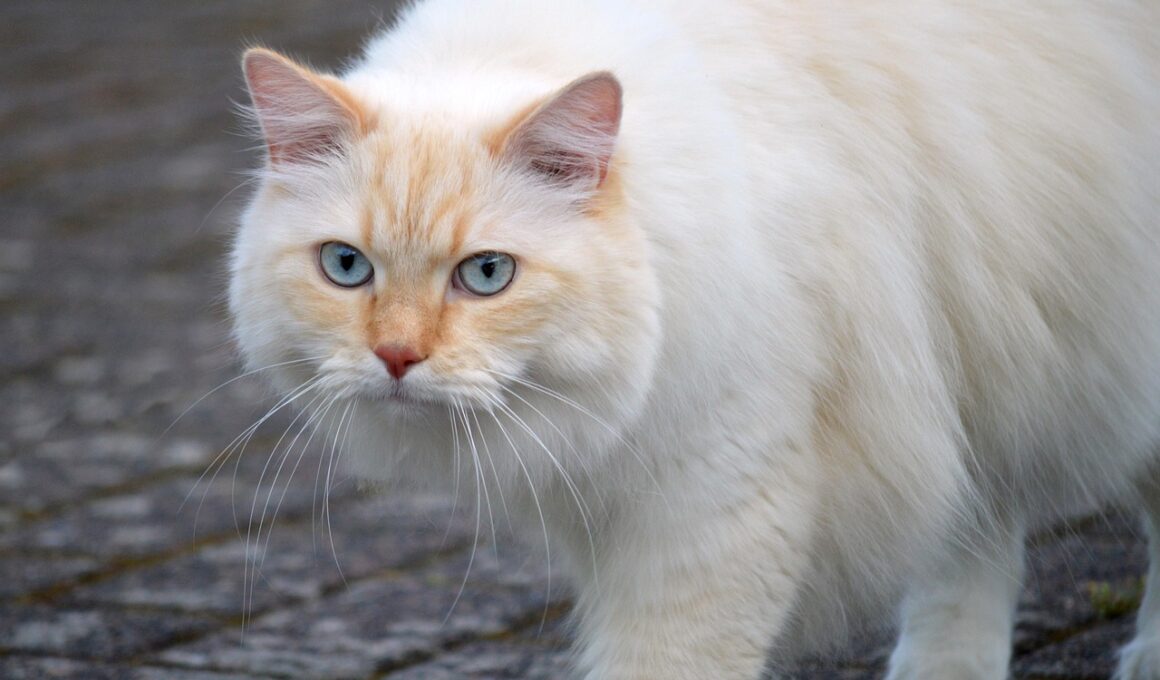Managing Your Cat’s Anxiety During Extended Car Trips
Driving long distances with your cat can be a challenging task, especially if your feline friend is prone to anxiety. As a responsible pet owner, it’s essential to make the journey as safe and comfortable as possible for your pet. Cats are creatures of habit; they thrive on routine and can become stressed when faced with unfamiliar environments. One effective way to alleviate anxiety is to prepare your cat ahead of time for the trip. Get them accustomed to their carrier by allowing them to explore and spend time in it before the journey. Additionally, make sure you have all necessary supplies ready. This includes food, water, litter, toys, and a comfy blanket that smells like home. The environment inside the vehicle can significantly impact a cat’s stress levels; ensure that it’s adequately ventilated and at a comfortable temperature. Regular stops are important to give your cat a chance to stretch and relieve themselves. With careful preparation and attention to your cat’s needs, you can help them feel secure and relaxed during the trip.
Another key factor to consider when driving long distances with cats is their health and safety. Ensure that your vehicle is cat-proofed, removing any items that might pose a danger. Cats can become anxious if they feel confined, so make sure their carrier is secure but not overly restrictive. Consider using a harness and leash during rest stops, allowing your cat to safely stretch their legs without the risk of escape. Furthermore, consult with your veterinarian prior to your trip; discuss any potential anxiety issues or medications that could assist. There are calming supplements and pheromone sprays available that can help alleviate stress in cats. Ensure that your cat is microchipped or wearing a collar with identification tags. This is particularly important during travel in case your cat escapes. Additionally, keeping your cat’s veterinary records accessible is vital for unforeseen emergencies. Taking these precautions contributes to safeguarding your pet and ensuring a smoother journey. Remember that your overall demeanor can influence your cat’s behavior, so try to remain calm and collected during the drive.
Creating a Calming Atmosphere
Creating a calming atmosphere in the vehicle plays a significant role in managing your cat’s anxiety during long trips. Car rides can be chaotic, but there are ways to create a peaceful environment. Start by setting up the cat carrier in a secure spot within the vehicle, ideally in a location where they can see you and feel involved. This can help reassure them during the journey. Covering the carrier with a light blanket can create a cozy den-like atmosphere that may help your pet feel more secure. During travel, consider playing soft music or an audio book; soothing sounds can mask unsettling noises from outside. Adapting to your cat’s natural instincts is vital; cats often feel more relaxed in enclosed spaces. Using familiar items, such as their favorite bed or toys, can also provide a sense of security. Regular breaks to let your cat out and explore are beneficial, as it breaks up the monotony of the drive and can reduce anxiety. This tailored environment can drastically improve your cat’s comfort during long trips.
Feeding your cat during long car rides requires thoughtful planning. Avoid feeding them a large meal right before the journey, as this can lead to discomfort or even motion sickness. Instead, opt for a light meal a few hours before departure to give your cat ample time to digest. During the trip, consider offering small amounts of food and water to keep them hydrated and nourished. Use spill-proof containers to reduce mess and make feeding easier in a moving vehicle. If possible, avoid making drastic changes to their diet right before the trip to prevent gastrointestinal upset. Additionally, if your cat is prone to motion sickness, discuss potential remedies with your veterinarian. Often, medications can help prevent nausea and ensure a more pleasant journey for both you and your pet. Monitor your cat for signs of discomfort or stress, and consider a break if needed. Maintaining a consistent feeding routine will not only help your cat feel more secure but can also minimize anxiety during long rides.
Understanding Your Cat’s Behavior
Understanding your cat’s behavior is crucial for effective travel management. Cats communicate through body language, and recognizing their signals can help you manage anxiety during long trips. Pay attention to their posture, tail movements, and vocalizations, as these can indicate how they’re feeling. If your cat’s ears are flat against their head, or if they are hissing or growling, it’s a sign they’re frightened. Give them space and try to soothe them with your voice. Conversely, if your cat seems relaxed and curious, they may be adjusting well to the experience. Create a safe zone at your destination, offering familiar smells and surroundings that can help them decompress after the trip. Additionally, allowing them to explore their new environment slowly can ease the transition and reduce stress. Social interaction at rest stops can also help boost your cat’s confidence, so don’t hesitate to offer extra attention and cuddles. Being attuned to your pet’s feelings can make a significant improvement in their travel experience, ensuring they feel valued and understood through the process.
After reaching your destination, it is essential to provide a space to help your cat adjust to their new surroundings. Cats can feel displaced in unfamiliar environments, so creating a designated relaxation area can promote comfort. Familiar bedding and toys can ease the transition by providing comforting scents from home. During their first days at the new location, allow your cat to explore their surroundings at their own pace while ensuring that they remain safe. Keep doors and windows closed to prevent escapes. You may also want to maintain a similar routine to what they are used to; feeding times and play schedules can help create a sense of normalcy. Additionally, offering them plenty of attention and interaction can facilitate their adjustment, reinforcing their security during this time of change. Be patient, as it may take a few days for your cat to feel entirely comfortable in their new environment. Keeping an eye on their behavior can help you address any issues that arise, allowing your cat to thrive in their new home after the long car trip.
Conclusion: The Importance of Preparation
In conclusion, managing your cat’s anxiety during extended car trips revolves around thorough preparation and understanding. By taking the time to create a secure and comfortable environment, you can alleviate stress for your pet. Understanding your cat’s behavior and recognizing their needs are central to providing a supportive travel experience. Additionally, ensuring that their health and safety are priorities will lead to a more enjoyable trip for both you and your cat. Remember, the journey can be just as important as the destination. Planning breaks along the way and maintaining familiar routines in a new space will provide reassurance to your feline companion. Furthermore, establishing a designated area for relaxation upon arrival can facilitate a smoother transition. By approaching travel with a mindful perspective and employing effective strategies, you can cultivate a positive experience for your beloved pet. Engage your veterinarian for additional tips and resources that can further enhance your travels. With patience and preparation, you can transform the experience of long-distance travel into an enjoyable adventure for both you and your cat.
Above all, remember that every cat has its unique temperament and journey preferences. The strategies outlined can serve as valuable guidelines, but always tailor your approach to fit your cat’s personality. Some cats may embrace travel and even enjoy new experiences, while others may require more support and gradual exposure to changes. Adapting your plans based on their reactions is key to ensuring their happiness and comfort. Ultimately, being attentive, patient, and responsive to your cat’s needs will foster a positive atmosphere that benefits you both. Keep in mind that the bond you share with your feline friend can be strengthened during these travels. Make wonderful memories while ensuring their well-being, and they may come to look forward to future adventures alongside you.


